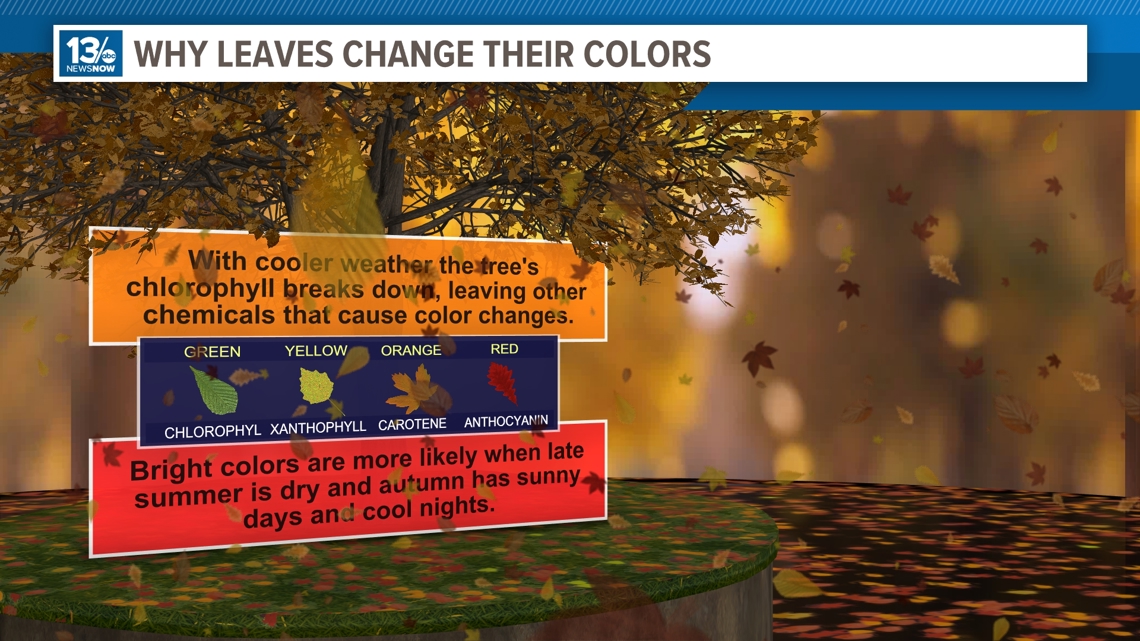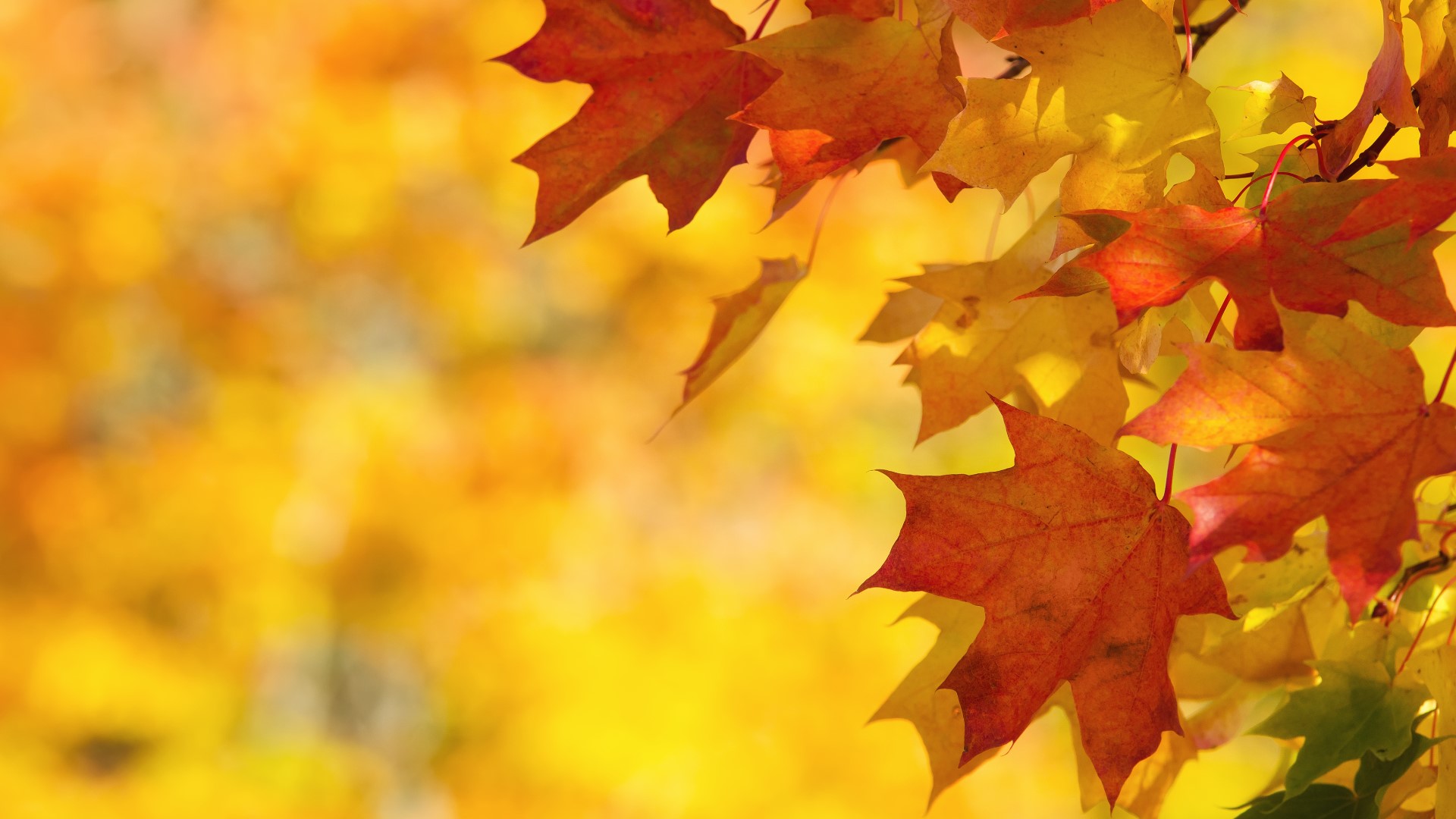NORFOLK, Va. — Every year most of us look forward to fall because of the beautiful scenery of the leaves changing colors. People from all over the country every year make special trips to the mountains or wherever they can get a peek at the vibrant colors.
But why does the color of the leaves change every year and how does the weather play a role in how bright these colors will be?
Leaves change colors in the fall due to the changes in the length of the day and the cooling of temperatures, signaling the leaves that it's time to get ready for the winter. During the summer, leaves are green due to the chlorophyll, which is responsible for photosynthesis. This chemical absorbs light with helps the leaves convert carbon dioxide into glucose, which gives the tree its energy and allows it to continue growing.
As Fall approaches, the days become shorter, and trees begin to shut down their production process. The chlorophyll in the leaves breaks down and is reabsorbed by the tree, revealing other pigments that were present all along but masked by the dominant green chlorophyll. These pigments include carotenoids, which produce yellow and orange hues, and anthocyanins, which are responsible for red and purple colors. The specific colors that emerge depend on the type of tree and the environmental conditions.
Temperature, light, and water supply all influence the intensity and duration of fall colors. Warm, sunny days and cool, but not freezing, nights tend to produce the most vibrant displays.
During the day, sugars are produced in the leaf, but cool nights and the gradual closing of veins leading into the leaf prevent these sugars from moving out.
This buildup of sugars and the resulting chemical reactions enhance the production of anthocyanins, leading to bright reds and purples.



